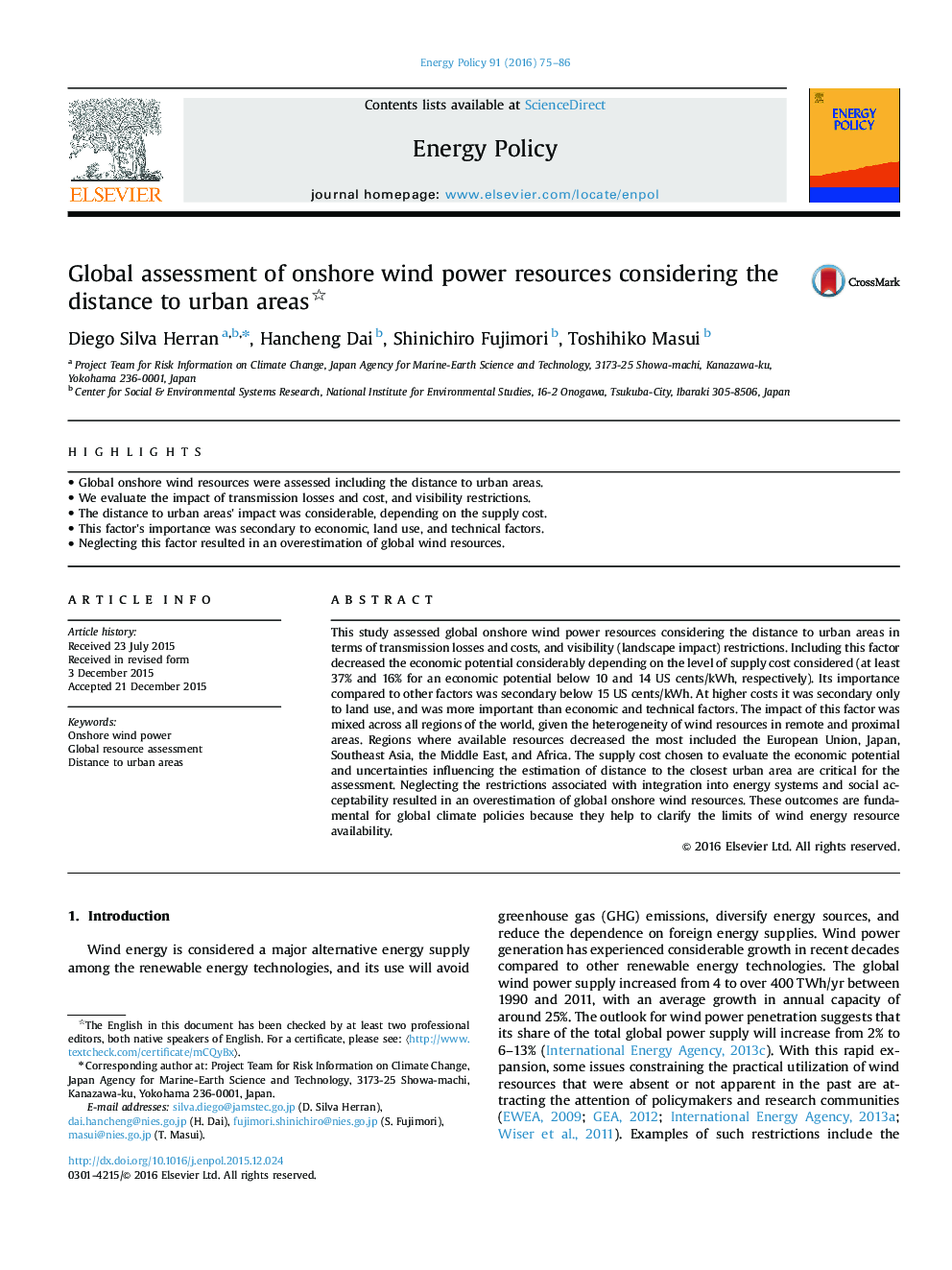| Article ID | Journal | Published Year | Pages | File Type |
|---|---|---|---|---|
| 7399450 | Energy Policy | 2016 | 12 Pages |
Abstract
This study assessed global onshore wind power resources considering the distance to urban areas in terms of transmission losses and costs, and visibility (landscape impact) restrictions. Including this factor decreased the economic potential considerably depending on the level of supply cost considered (at least 37% and 16% for an economic potential below 10 and 14 US cents/kWh, respectively). Its importance compared to other factors was secondary below 15 US cents/kWh. At higher costs it was secondary only to land use, and was more important than economic and technical factors. The impact of this factor was mixed across all regions of the world, given the heterogeneity of wind resources in remote and proximal areas. Regions where available resources decreased the most included the European Union, Japan, Southeast Asia, the Middle East, and Africa. The supply cost chosen to evaluate the economic potential and uncertainties influencing the estimation of distance to the closest urban area are critical for the assessment. Neglecting the restrictions associated with integration into energy systems and social acceptability resulted in an overestimation of global onshore wind resources. These outcomes are fundamental for global climate policies because they help to clarify the limits of wind energy resource availability.
Related Topics
Physical Sciences and Engineering
Energy
Energy Engineering and Power Technology
Authors
Diego Silva Herran, Hancheng Dai, Shinichiro Fujimori, Toshihiko Masui,
